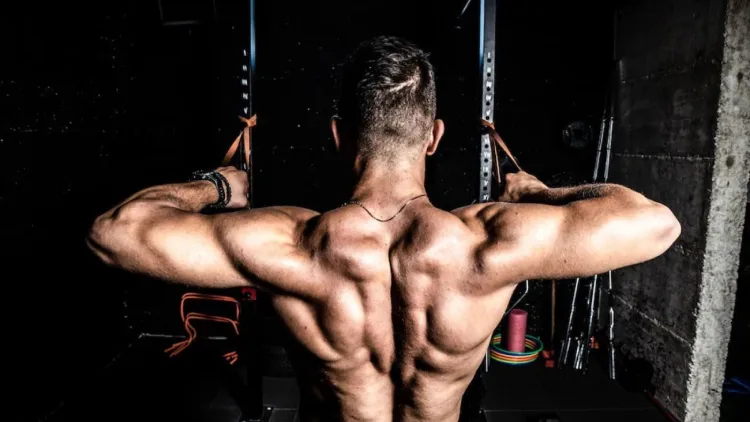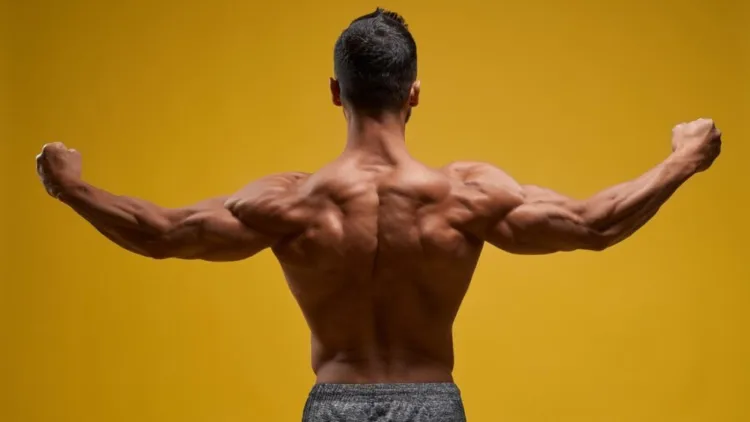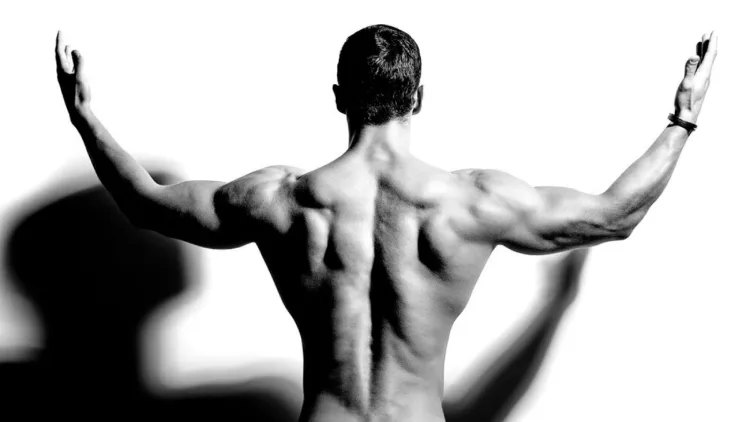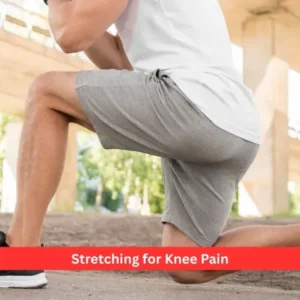Rhomboids are big and small ones, and they are responsible for the posture, the upper back and the shoulder blades. These are the muscles that are between the shoulder blades, and it is an attachment between the spine and the scapula. Strong rhomboids control and move the shoulder blades backwards and upward, enhancing the upper body’s muscle strength and posture.
If rhomboids are not well developed, it leads to bad posture and puts us at risk of shoulder and upper body future injuries, such as the pulling of our rotator cuff muscles.
In this post, I will examine some of the best forms of exercise that can help to strengthen the rhomboids, which will lead to better posture. If you add these exercises to your fitness regime, there will be improvement in the upper back muscles that will enhance posture, reduce the chance of getting an injury, while at the same time improving performance on other activities.
Understanding the Rhomboid Muscles
The rhomboid muscles are a group of muscles that are on the upper back region of the body below the trapezius. These muscles are involved in the maintenance of good posture, stabilisation of the shoulders, as well as in the movement of the upper part of the body. The chief action of the rhomboids is to pull and turn the scapulae or shoulder blades backwards towards each other (retracting) and downward (reducing their angle).
There exist two major pairs of rhomboid muscles namely; we have what is referred to as the rhomboid major and the rhomboid minor. It is a quadrilateral muscle that covers the thoracic spine, originating from the second, fourth and five vertebrae. The rhomboid minor is also called the cervical rhomboid and is pear-shaped and located in the C7 and T1 vertebrae. They act to fix some segments of the vertebral column and scapula, and also contribute to the movement of the upper extremity.

Benefits of Strengthening the Rhomboids
Exercising the rhomboid muscles has a great impact on the overall health of the upper body as well as spinal health. Here are some key benefits:
- Improved Posture: Rhomboids major are strong muscles that consolidate the blades that are in the back, making the shoulder more stable during standing and walking. This can certainly help in minimising the inclination to lean on the desk and enhance the position one has when sitting.
- Decreased Shoulder Pain: ‘Lack of strength in the rhomboids is likely to cause shoulder pains and also cause the muscles to be prone to injuries’. Shoulder pain often occurs as a result of these muscles’ weakness and can be remedied by exercising them properly.
- Increased Upper Body Strength: Rhomboids are a part of the upper human body and are employed in various activities such as rowing, pulling, and lifting movements. They help to develop the stamina and enhance upper body muscles, and this makes even the simplest of activities and training more manageable.
- Improved Athletic Performance: Rhomboids are large muscles that help support and give strength in the shoulders and upper back, and thus enhance several exercises and physical activities. That is why training your rhomboids could be beneficial, especially if you are into weight lifting or any form of sports activities.
1. Leaning Row
It is a compound movement targeting the rhomboids and other muscles found in the upper back, including the trapezius and the latissimus dorsi. Rowing is beneficial for the upper and middle back muscles; it would be wrong to say that it is one of the ideal exercises to stimulate the development of rhomboids.
How to:
- Stand in a good position with feet fairly wide and take a dumbbell in each hand.
- This reflects that the forward bending is at the hip joint rather than the lumbar spine and the upper half of the body makes a right angle with the lower half of the body.
- Hold the dumbbells with palms facing downwards and the elbows locked and positioned with the line through your body horizontally.
- Bring your elbows to the side and in towards your chest while trying to also squeeze on the back as if trying to press your shoulder blades into your back.
- Lower your hamstrings down to the initial position as slowly and carefully as you ascended.

2. Seated Cable Row
The seated cable row is an excellent exercise to isolate the rhomboids and have you perform scapular movement. The variation of this exercise should be adjusted according to the fitness level by using other attachments or weights.
How to:
- Sit down on a cable rower and keep your feet flat on the footplate with slightly bent knees.
- With both hands, holding the cable attachment, palms facing one another.
- Stay seated with the back straight, tighten the core, and stretch the arms using the attachment.
- Take the attachment towards the chest with the gaze on the contraction of the shoulder blades as you pull the elbows back.
- Proceed to gradually go back to the beginning position, with arms fully extended.
- Top tips: Row with your chest up, and avoid the temptation to lean back too much. If you aim to maximise the activation of your rhomboids, don’t move your arms; move your shoulder blades.
3. Face Pull
Face pulls are useful for the upper back and shoulder area as well as you recruit all the rhomboid, delt rear and trapezius muscles. This should prove very helpful to people who spend most of their time sitting, as it prevents the development of a forward hunch.
How to:
- Tie the end of a long piece of rope with a loop that could be held by hand, and put the loop in front of a cable machine at face height.
- He turns towards the machine and grasps the rope with both his hands, making the palms face opposite each other.
- Turn outwards with your arms stretched as far as possible away from yourself, and ensure that as you do this, you bend your stomach muscles.
- Draw the bar towards your chest, ensure that your elbows are high and your shoulder blades are pinched together.
- Mike, gradually come back into the starting position.
4. Scapular Retractions
Scapular pull-ups are very simple and worthwhile exercises that will engage the target muscles, mainly rhomboids and also train the control of scapulae. Since this exercise can be performed in any setting, it makes it perfect either for an upper back warm-up or a seven-minute fix.
How to:
- For this exercise, find yourself a comfortable position, preferably a standing or sitting one, with your arms away from your body.
- On the other hand, pay much attention to flatten your shoulder blade towards the back, as if you are pushing it towards your trousers pocket.
- After that, hold this brief contraction for a few moments, then slowly release and come back to the starting position.
- Repeating it as many times as will be necessary.
- Top tips: It is also important not to shrug your shoulders during the contraction. It is very important to concentrate on the squeezing of the shoulder blades back towards each other without straining.

5. Prone Y-Shaped Raises
Prone y-shaped raises target the rhomboids and the other upper back muscles, besides enhancing scapular stability. This body weight exercise is also very effective in improving overall flexibility and range of motion of the shoulders.
How to:
- Grasp a bench or the end of a stability ball, lying at the edge of it, with your arms stretched over your head as wide as you can with your palms down.
- Suck in your stomach muscles and try to reach behind you as you lift your upper body and legs off the bench.
- Pregnancy workouts – hold the contraction at the top for a few seconds and then release the stretch back to the starting position.
- The final product can be recombined in as many coups as desired.
6. Dumbbell Reverse Flyes
The dumbbell reverse flyes exercise is one of the most famous isolation workouts that helps to tone the rhomboids and rear deltoids. This exercise is beneficial in building the upper back and joint muscles, crucial for issues involving the shoulder joint and most especially to avoid any shocking incident.
How to:
- In this position, stand with both feet approximately one and a half times your shoulder’s width apart and have a dumbbell in each hand.
- First, you should lower your body slightly with your back being flat and your shoulder in line with the floor, bending at the hips.
- With your palms facing each other, extend your arms while bending your elbows a little.
- Raise both your arms to a certain position abreast from your sides, and as you do so, the shoulder blades should try to touch at the topmost position.
- Slowly come to the stated position and place the dumbbells down on the carpet as well.
Seven things to help you strengthen your Rhomboids safely and appropriately.
Here are some tips that would ensure the most of your rhomboid has been achieved with the least chances of a breakdown;
- Warm up: Before exercising your rhomboids, it is advisable to warm up with some physical activities, such as circulation and warm-up stretches, to prepare your muscles for your exercise regimen.
- Focus on proper form: But remember, always go for the proper form to get the right kind of output for your rhomboids while at the same time avoiding overworking other muscles. To improve your form while doing the exercises, strive to have a straight back, tuck your stomach in and refrain from swinging to finish the exercises.
- Go slowly: This is because fitness experts recommend that the volume, frequency, duration, distance, or time of an exercise increases over time. This means the tactics enable you to go on improving your form, so as not to be injured from overtraining.
- Include rest and recovery: Make sure to include a sufficient amount of set intervals before performing the next set or exercise. It is important to allow muscles enough resting time between working them out, either through incorporating rest days or engaging in low-intensity exercises.
- Listen to your body: Always check on your bodily sensations about your exercising routines. Any discomfort or pain should be noted during the exercise, but if at any point the pain is well perceived, then one should cease the exercise, or at least make it less rigorous. Soreness in the muscles is very natural, but soreness should not be uncomfortable enough to warrant pain.
- Get professional guidance: As with any strength training program, people who are novices or not sure of the form should seek the services of a fitness trainer. A trainer is useful in that he/she can guide you and show you how to maximise your effort when working out your rhomboids.

Bottom line
It is very important to give extra attention to your rhomboid muscles to ensure the proper health of the upper back area and the spine, as well as to avoid injuries in this region. Incline rows, seated cable pulls, and face pulls can be used in the training process, targeting the rhomboids and delivering several benefits, ranging from improved overall fitness to the athletes’ performance.
Therefore, always take caution to avoid injuries, practice slowly and steadily and pay attention to signals of your body in case you are doing rhomboid training. Regular practice will lead to muscular balance in the upper back and muscular strength to help you meet your general fitness requirements.
Frequently Asked Questions
1. What are rhomboid muscles, and where are they located?
Rhomboid muscles are located in the upper back between the shoulder blades and the spine. They help retract the scapula and maintain good posture.
2. Why is it important to strengthen the rhomboids?
Strong rhomboids support better posture, reduce shoulder pain, prevent upper body injuries, and improve performance in activities like lifting and rowing.
3. How often should I train my rhomboids?
Training 2–3 times per week with proper rest between sessions is ideal for strengthening rhomboids and allowing for muscle recovery.
4. What are the best exercises for rhomboids?
Top exercises include leaning rows, seated cable rows, face pulls, scapular retractions, prone Y-raises, and dumbbell reverse flyes.







